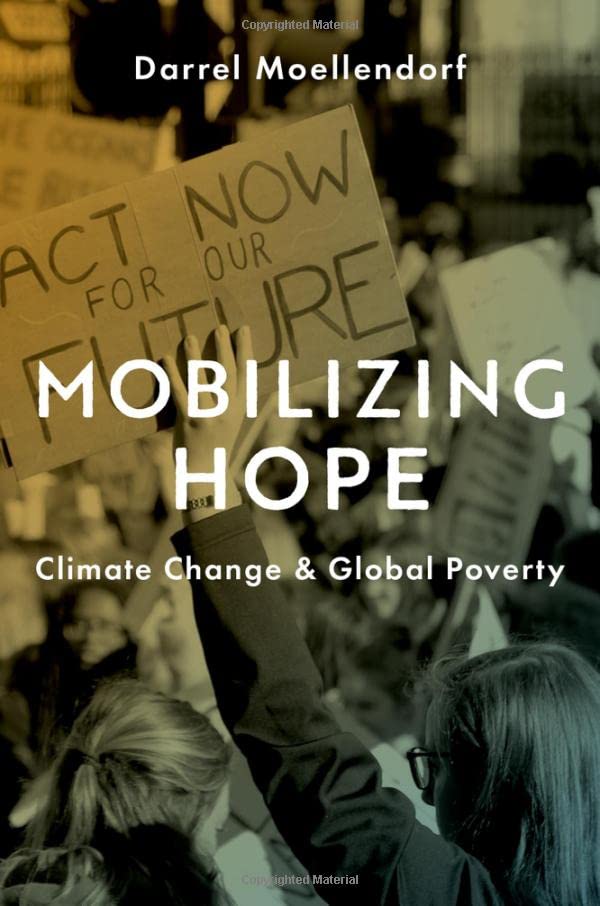Introduction Most books have many aims. This one is no different. One cen- tral aim of this book is to explain the important ways in which the problems of climate change and global poverty are intertwined. The intertwining that interests me is moral. If we care about poverty, as we should, we need to be concerned about climate change. But also, addressing climate change needs to be attentive to poverty. Although the intertwining is moral, it exists because of complex causal interactions, such as those between the engines of human development and the workings of the climate system. There is no understanding of what to do about climate change without under- standing these. As I first wrote this the circumstances in Zambia served as an ex- ample. From its base at the bottom of the gorge to its upper rim, the handsome arched wall of the Kariba Dam stands 128 meter (420 feet) high and 579 meters (1,900 feet) wide. The dam construction was a marvel of engineering, construction, social planning, and environmental transformation by the administrators of Northern and Southern Rhodesia (present-day Zambia and Zimbabwe) and Nyasaland (present-day Malawi). A feat of colonial will, the construction required the forced relocation of more than 50,000 Batonga people living in the gorge, the stripping and burning of the valley vegetation, and the transfer of some 6,000 elephants, antelopes, rhinos, leopards, zebras, and assorted birds and reptiles in an effort with the grandiose name “Operation Noah.” More than a million cubic meters of concrete were poured, and $480 mil- lion was spent. When the construction ended and the sluice gates closed, the immense Lake Kariba slowly filled the gorge. After five 2 Mobilizing Hope years, the wall holding back the mighty Zambezi River contained the world’s largest man-made lake, extending 220 kilometers (170 miles) in length
چکیده فارسی
مقدمه اکثر کتابها اهداف زیادی دارند. این یکی فرقی نداره یکی از اهداف اصلی این کتاب توضیح راههای مهمی است که در آن مشکلات تغییرات آب و هوایی و فقر جهانی در هم تنیده شده اند. درهم تنیدگی که به من علاقه دارد اخلاقی است. اگر همانطور که باید به فقر اهمیت می دهیم، باید نگران تغییرات آب و هوایی باشیم. اما همچنین، پرداختن به تغییرات آب و هوایی نیاز به توجه به فقر دارد. اگرچه این درهم تنیدگی اخلاقی است، اما به دلیل فعل و انفعالات علّی پیچیده، مانند آنهایی که بین موتورهای توسعه انسانی و عملکرد سیستم آب و هوا وجود دارد، وجود دارد. هیچ درک درستی از اینکه بدون درک این موارد در مورد تغییرات آب و هوایی چه باید کرد وجود ندارد. همانطور که برای اولین بار این را نوشتم، شرایط در زامبیا به عنوان یک مثال بود. از پایه آن در پایین دره تا لبه بالایی آن، دیواره قوسی زیبای سد کاریبا 128 متر (420 فوت) ارتفاع و 579 متر (1900 فوت) عرض دارد. ساخت سد شگفت انگیزی از مهندسی، ساخت و ساز، برنامه ریزی اجتماعی و تحولات زیست محیطی توسط مدیران رودزیای شمالی و جنوبی (زامبیا و زیمبابوه کنونی) و نیاسالند (مالاوی کنونی) بود. این ساخت و ساز یک شاهکار اراده استعماری، مستلزم جابجایی اجباری بیش از 50000 نفر از مردم باتونگا ساکن دره، برداشتن و سوزاندن پوشش گیاهی دره، و انتقال حدود 6000 فیل، آنتلوپ، کرگدن، پلنگ، گورخر و انواع مختلف بود. پرندگان و خزندگان در تلاشی با نام باشکوه "عملیات نوح". بیش از یک میلیون متر مکعب بتن ریخته شد و 480 میلیون دلار هزینه شد. هنگامی که ساخت و ساز به پایان رسید و دروازه های دریچه بسته شدند، دریاچه عظیم کاریبا به آرامی دره را پر کرد. پس از 2 سال بسیج امید، دیواری که رودخانه قدرتمند زامبزی را مهار میکرد، بزرگترین دریاچه ساخت بشر جهان را به طول 220 کیلومتر (170 مایل) داشت
ادامه ...
بستن ...
The dam promised electricity and modernity to the people of the region. Power to the people, of a sort. Independence, how- ever, would not come to Zambia for several more years. Surely a democratic idea, power to the people is also an ideal of human development. There is a well-established correlation between improvements in human development and the wide dissemina- tion of modern forms of energy, in particular electricity and clean cooking fuels. Massive hydroelectric projects that run roughshod over local people and ecology are hardly commendable, but electrification that puts an end to energy poverty is. Home electrification extends the time during which children can do homework, facilitates the use of computers and internet technology, allows clean cooking that reduces respiratory illness caused by indoor pollution. Streetlights provide a measure of safety for women and girls at night. And the grid powers schools, hospitals, and factories. In stressing the importance of electrification for advancing the Russian Revolution, V.I. Lenin once quipped, “Communism is Soviet power plus the electrification of the whole country.”1 Like Karl Marx, Lenin looked forward to a communist era characterized by such a high level of overall production that human prosperity would become generalized. Abundance would render obsolete the need to divide society into classes in order to discipline producers to work so that a minority would be free to enjoy the social surplus. Whatever one thinks of the possibility, or even the desirability, of such a classless society, countries making developmental progress in the twentieth century have repeatedly demonstrated the impor- tance of electrification. Significant human development gains are reliably accompanied by dramatic increases in per capita energy consumption. Introduction 3 A recent United Nations policy brief declares that “reducing the global disparity in energy is key to reducing income inequalities, gender inequalities and inequalities in other dimensions such as rural/urban income disparities. A lack of adequate, reliable and affordable supplies of modern energy disproportionally impacts women and children. It is also more severe in rural communities and it limits their productive opportunities, enterprise growth and employment, exacerbating income inequality and persistent pov- erty.”2 Extreme poverty is horrifically brutal. The anthropologist and medical doctor Paul Farmer relates a typical story of poverty and medical neglect in rural Haiti. It is of a woman with metastatic breast cancer who had been to fourteen different clinics, finding none willing to operate because she could not pay the $700 fee. “A young woman takes my arm in a common enough gesture in rural Haiti. ‘Look at this, doctor.’ She lifts a left breast mass. The tumor is not at all like the ones I was taught to search for during my med- ical training in Boston. This lesion started as an occult lump, per- haps, but by this September day has almost completely replaced the normal breast. It is a ‘fungating mass,’ in medical jargon, and clear yellow fluid weeps down the front of a light-blue dress. Flies are drawn to the diseased tissue, and the woman waves them away mechanically.”3 Although every experience of illness is unique, Farmer’s account of poverty and sickness is sadly illustrative. Extreme poverty is the leading cause of death globally. At full capacity the Kariba Dam drives turbines on the north side that produce more electricity than any other source in Zambia. Still, energy poverty is endemic. According to the World Bank, only about 42 percent of Zambia’s population has access to elec- tricity. And in rural areas, a mere 12 percent have access.4
ادامه ...
بستن ...










_663538a5868f3.jpg)